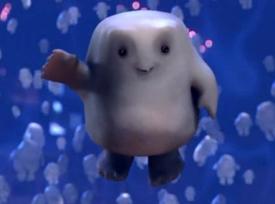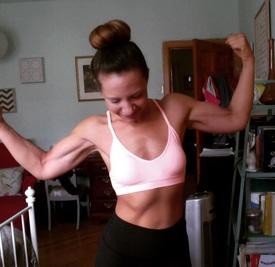Grams ounces cups ahhhhhhhh
Options

witcherkar
Posts: 138 Member
So as a lapbander, they tell us to use a measuring cup to make sure we eat no more than 1 cup of food per meal. As I try to log accurately, I use grams and a foods sCale to be exact. I can use a calculator to get it into ounces. Like my dinner. Tonight I had 129 grams of chicken and 52 grams of green beans. The total came out to like 6 ounces. So I ate less than a cup of food? It looked like alot more than what I could fit in a measuring cup..... help
0
Replies
-
Weight ounces. Fluid ounces. Apples and oranges.0
-
Yeah, what Francl said.
I think this is one of those rare situations when using a cup or eyeballing it to make sure that it fits in a cup as well as weighing for the calorie count is a good idea, since I am understanding that the cup limitation is because of the procedure and reduced space.0 -
If you're counting calories as well as dealing with the lapband stuff it might be worth your time to put your measuring cup on the scale and zero it out. That way you'll have the grams for calorie counting and the volume to conform to the doctor's instructions. It would also be an interesting look at how volume vs weight estimates for serving size line up.0
-
Kamikazeflutterby wrote: »If you're counting calories as well as dealing with the lapband stuff it might be worth your time to put your measuring cup on the scale and zero it out. That way you'll have the grams for calorie counting and the volume to conform to the doctor's instructions. It would also be an interesting look at how volume vs weight estimates for serving size line up.
This is what I would do. Put the cup on the scale, tare it, fill it and then log the grams of what you eat.0 -
Totally agree with putting the measuring cup on the scale.0
-
Thanks guys! I will be doing that tomorrow!
 0
0 -
Kamikazeflutterby wrote: »If you're counting calories as well as dealing with the lapband stuff it might be worth your time to put your measuring cup on the scale and zero it out. That way you'll have the grams for calorie counting and the volume to conform to the doctor's instructions. It would also be an interesting look at how volume vs weight estimates for serving size line up.
Yeah, this is perfect. You really will want to be monitoring the volume considering the lap band, but this way you'll get an accurate calorie count as well.0 -
I too have the lapband and i was told by my nutritionist that not everything can be measured on the scale because 4 oz of chicken breast is not the same of 4 oz of cheese. So i just use the cup for measuring rice, beans, etc and buy pre-packaged portions of cheese etc. Or i guide myself using the nutrition label. Look at the serving size and divide the servings into your allowed portions. For example, if I buy a big block of cheese and it has 16 servings of 1oz each i divide the block in 8 servings because i usually eat 2oz of cheese as a snack. I hope i was helpful. Add me if you want. Good luck.0
This discussion has been closed.
Categories
- All Categories
- 1.4M Health, Wellness and Goals
- 396.6K Introduce Yourself
- 44.2K Getting Started
- 260.8K Health and Weight Loss
- 176.3K Food and Nutrition
- 47.6K Recipes
- 232.8K Fitness and Exercise
- 449 Sleep, Mindfulness and Overall Wellness
- 6.5K Goal: Maintaining Weight
- 8.7K Goal: Gaining Weight and Body Building
- 153.3K Motivation and Support
- 8.3K Challenges
- 1.3K Debate Club
- 96.5K Chit-Chat
- 2.6K Fun and Games
- 4.5K MyFitnessPal Information
- 16 News and Announcements
- 18 MyFitnessPal Academy
- 1.4K Feature Suggestions and Ideas
- 3K MyFitnessPal Tech Support Questions






